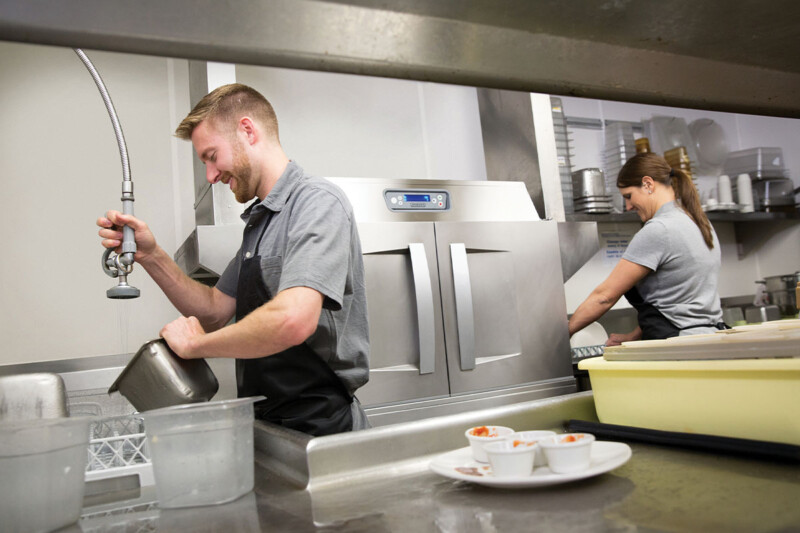Choosing Induction for the Back-of-House
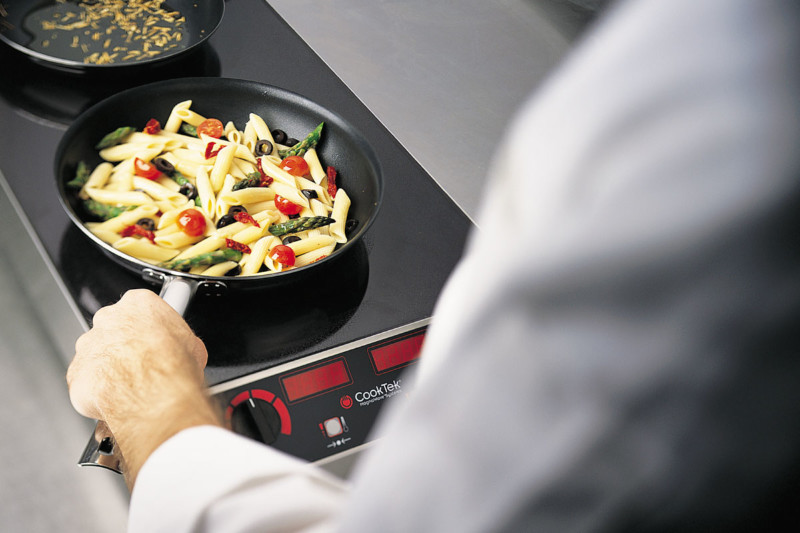
With more municipalities banning new natural gas hook-ups due to climate change concerns, more operators are taking a closer look at induction as the way to electrify their kitchens in the future.
Until recently, induction cooking largely has been relegated to countertop hobs used for light kitchen duty or display cooking on buffet lines or in cafeterias. With more true back-of-house induction hobs coming from manufacturers, operators are beginning to see the benefits of induction for production in the kitchen.
Most back-of-house units are 3500W, equivalent to a typical 31,000 Btu gas burner.
What makes these units compatible with the rigors of production cooking are power and durability. While typical light-duty countertop induction hobs generate up to about 1800W of power, a hob designed for the back-of-house generates 2500W or more. Most are 3500W, equivalent to a typical 31,000 Btu gas burner. They’re also engineered to withstand the heat and grease in a production kitchen that might cause lighter duty hobs to fail.
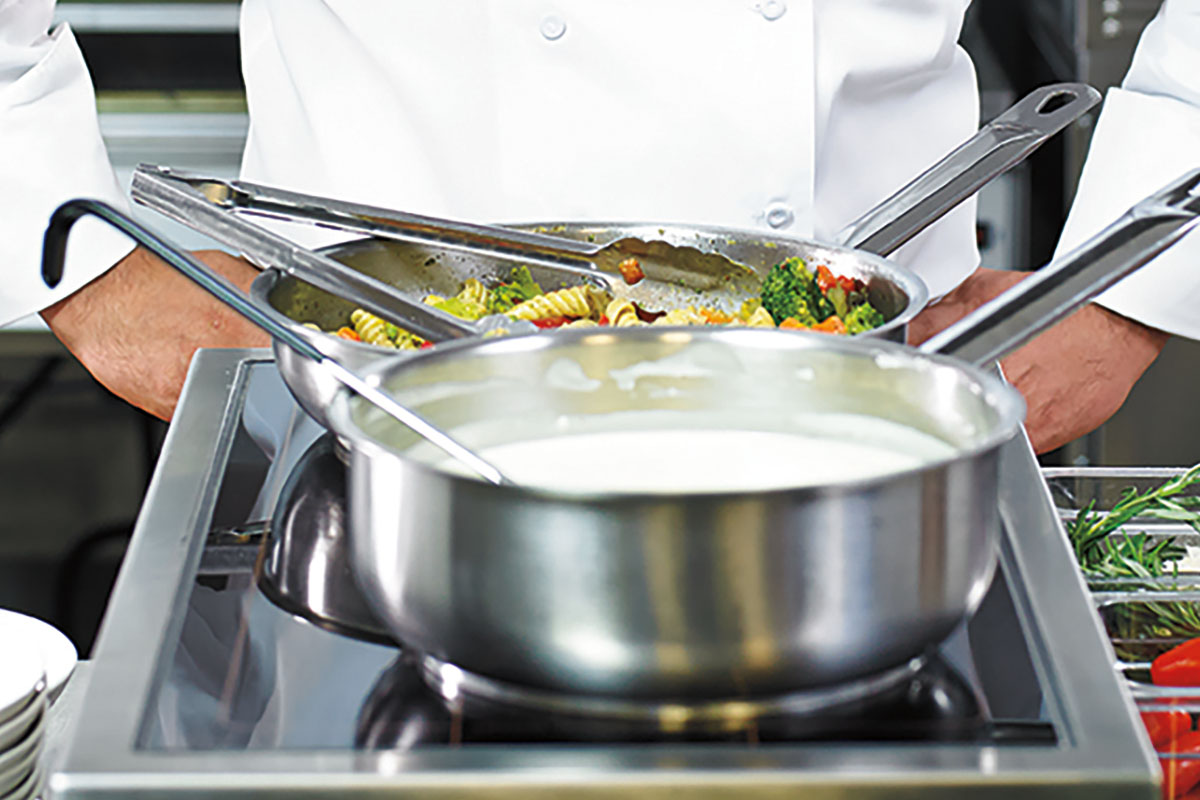
Courtesy of Garland.
What’s So Cool?
Hot, but not. Inducted heat is like that old riddle: What’s hot and cold at the same time? (An ice cream sundae or vodka on the rocks, depending on your perspective.) Induction works by using a copper coil to create alternating magnetic fields. When a steel pan is put on top, it completes the circuit, inducing an electric current in the pan, which heats the pan. When the pan is removed, the circuit is broken, so even if the power is still on, the hob stays cool.
Easy to clean. That cool, ceramic glass top is easy to wipe clean with a damp cloth compared to chipping carbonized food off the iron or steel grates of a traditional range. And there are no spaces in which food can spill.
Precise. With the right controls, induction generates incredibly precise amounts of localized heat. It has the instant-on/instant-off characteristic of gas-flame cooking that chefs like, but is even more precise. Many of today’s induction hobs allow you to adjust power from 0%-100% in increments of 1%. Or you can choose a specific set point temperature anywhere from about 70ºF-500ºF that’s accurate to within 1ºF, something cooks can’t do on a gas burner. And programmability means less skilled labor can consistently cook items to recipe specs.
Fast and efficient. Then there’s speed. Induction hobs are typically about 84%-93% efficient. Since most of the energy in an induction hob goes directly into the pan, it heats faster than a pan on a gas flame, so it heats/cooks food faster. Gas burners, in contrast, are about 30%-44% efficient. Think about it this way: If your gas burner is 35,000 Btu and 35% efficient, about a third of the energy or heat is going into the pan, and about 22,750 Btu are dissipating into the air, thus the need for your hoods to capture and remove the byproducts of combustion, heat and moisture, which in turn means your HVAC has to work harder to keep the kitchen cool. With induction, kitchen employees stay more comfortable.
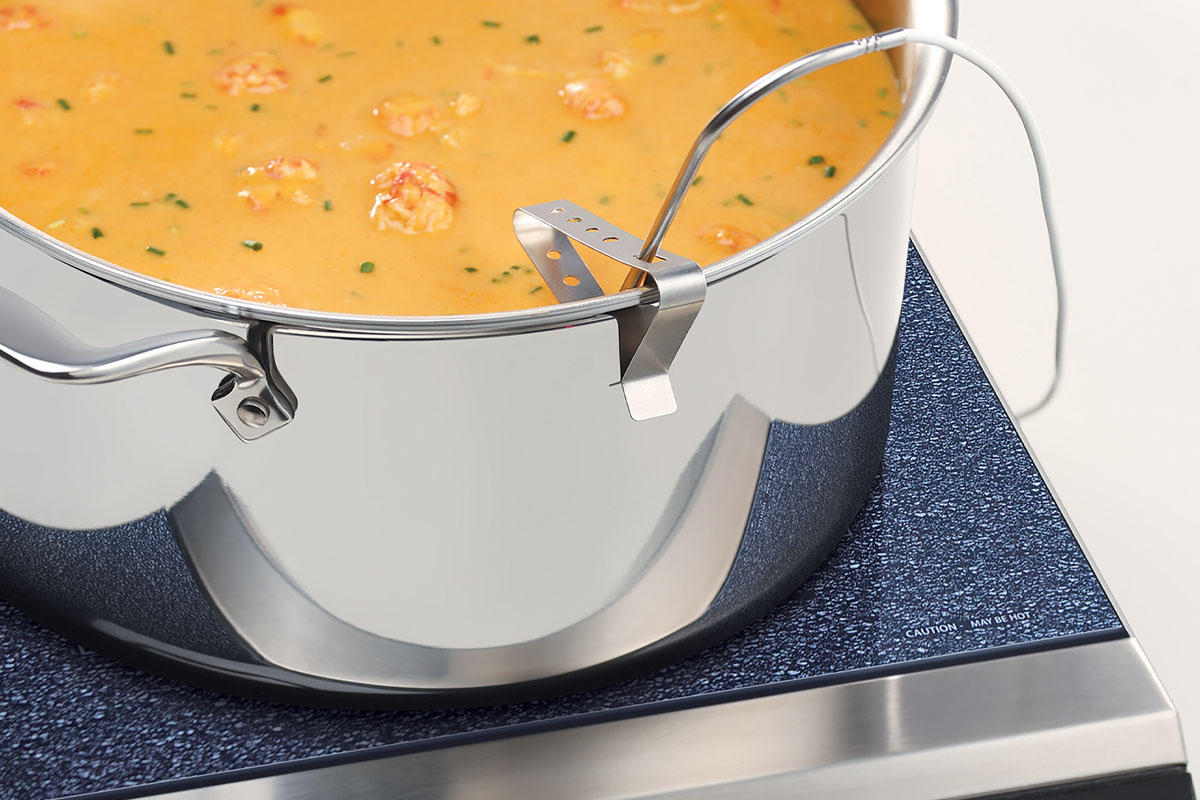
Courtesy of Hatco.
What to Look For
Power. For the demands of production cooking you’ll need a hob that runs on 208V, 230V (EU) or 240V service. Units that run on 115V-120V service are fine for light-duty cooking—omelets, light sautes, etc. But higher power hobs more closely mimic the commercial gas ranges cooks are used to while providing the benefits previously noted. And at least one maker offers 5kW and 7kW hobs for rapidly heating large saucepans or pots of water for cooking pasta or boiling potatoes, etc.
Configurations. Hobs come in all sorts of configurations, and makers usually offer several types, but may not offer all. Which you choose largely depends on your application.
- Countertop. Countertop models (the focus of the Gallery starting on Page 44) are available in single and double hobs. Some operators prefer countertop units to drop-ins or ranges because they provide more flexibility. They can use induction hobs in the morning to prepare breakfast items, then trade them out for panini presses at lunchtime, for example. Double hobs are available in side-by-side and front-to-back models, which you might spec if counter space is scarce.
- Drop-ins. Like countertop units, drop-ins come in single and double hob models. The latter are available in side-to-side or front-to-back configurations. Check with makers to see how they can be mounted.
- Ranges. At least one maker offers an induction range with a convection oven below as a replacement for a gas range.
- Cooktops. Some manufacturers can incorporate multiple hobs into cooktops for cooking suites or lines.
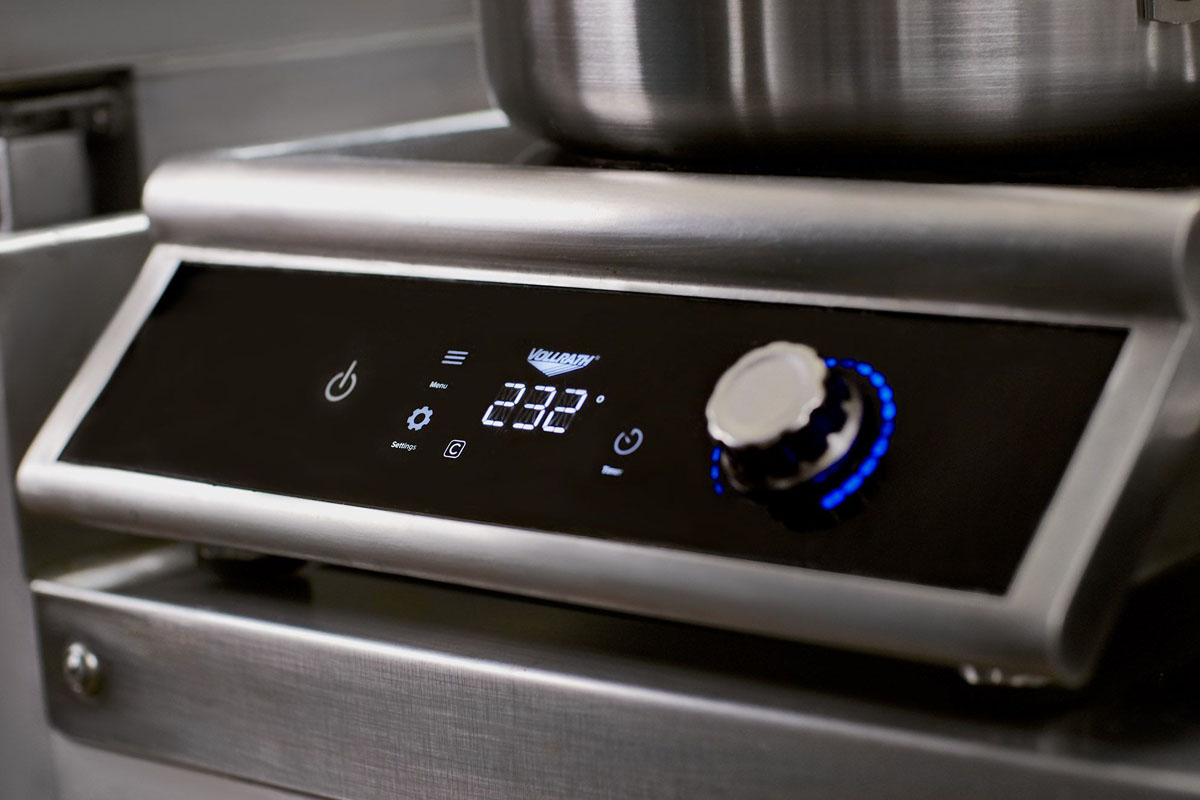
Courtesy of Vollrath.
Durability. With other equipment running full force, kitchens can still get hot even with induction cooking, and of course you’ll still need a ventilation hood to filter grease-laden air. Make sure the hob you buy can withstand the heat. Some are rated up to about 104ºF, others up to 128ºF. (Though rare with good ventilation systems, kitchens can get as hot as 120ºF in the summer.)
Induction hobs have quiet, variable speed internal fans to help keep the electronics cool. Some models have grease filters to help keep internal components clean as well. One maker, though, says its fan doesn’t need a filter so is easier to maintain. Pay attention, however, to how much clearance, and where, units need to breathe properly, especially if you plan on using drop-ins to create an induction cooking station or when placing countertop units close together.
Some makers have models that allow three-stage programming. A multistage cook process could bring soup to a boil, reduce heat for one hour and then hold it until serving time.
Control. How exact an induction hob should be, depends on your application. If you’re using induction hobs simply for sauteing you probably don’t need much in the way of settings or bells and whistles. However, if you’re searing proteins for sous vide, making pastry creme or tempering chocolate—techniques that require precise temperatures—or if you want employees to strictly follow a multistage cooking process, you should carefully consider:

Courtesy of Montague.
- Controls. Some hobs use a twist knob to adjust the power level, so it mimics a gas range; others use a touch screen with up/down arrows. One maker even offers both.
- Settings. Most models let you set power increments or temperature increments. One maker, for example, has 20 power settings and 22 temperature settings. Other makers give you variable control over power settings from 0%-100% in increments of one, and do the same with temperature within a range, such as 68ºF-400ºF. (You may need a hob capable of a higher temperature setting, e.g., 500ºF.)
- Programmability. Several models also allow you to preset multistage cooking processes. With a probe, for example, a preset can bring a soup or sauce to a boil, reduce the heat to 180ºF for one hour, then hold it at 140ºF until served. Some units only provide two-stage programming, but a couple of makers have models that allow three-stage programming.
- USB port. If you want to program your hob, a USB port makes the process quick and easy. It also lets you update a model’s firmware. Not all models have a port, however.
Technology. While the basic technology behind (or under) all these hobs is similar, each manufacturer has put its particular tweaks on its models. Some of them are in the software that controls performance, and some differences are in the hardware. Features to note:
- Thermostatic sensors. The more sensors the better for even heat and precise control. Some units have two, some four.
- Pan detection. Hobs can sense a ferromagnetic pan on top, and won’t turn on unless they do. Some models recognize pans not specifically made for induction and adjust power accordingly. Another maker’s units have expanded sensing, so cooks can lift pans to toss ingredients without losing a connection. Yet another has a model that allows you to use one or more different size pans, and automatically adjusts the power based on the size or number of pans.

Courtesy of Vollrath.
More Tips
- Build enclosures to electrical code and have them inspected by your local authority.
- Seal drop-ins properly to ensure no moisture can leak into the enclosure.
- Don’t underestimate the importance of cookware. Even hobs that accommodate less-than-ideal pans won’t work without proper ferromagnetic cookware.
- Check and compare warranties and service networks.
Powerful Burners
The following countertop models feature hobs that generate 2500W or more, depending on voltage.
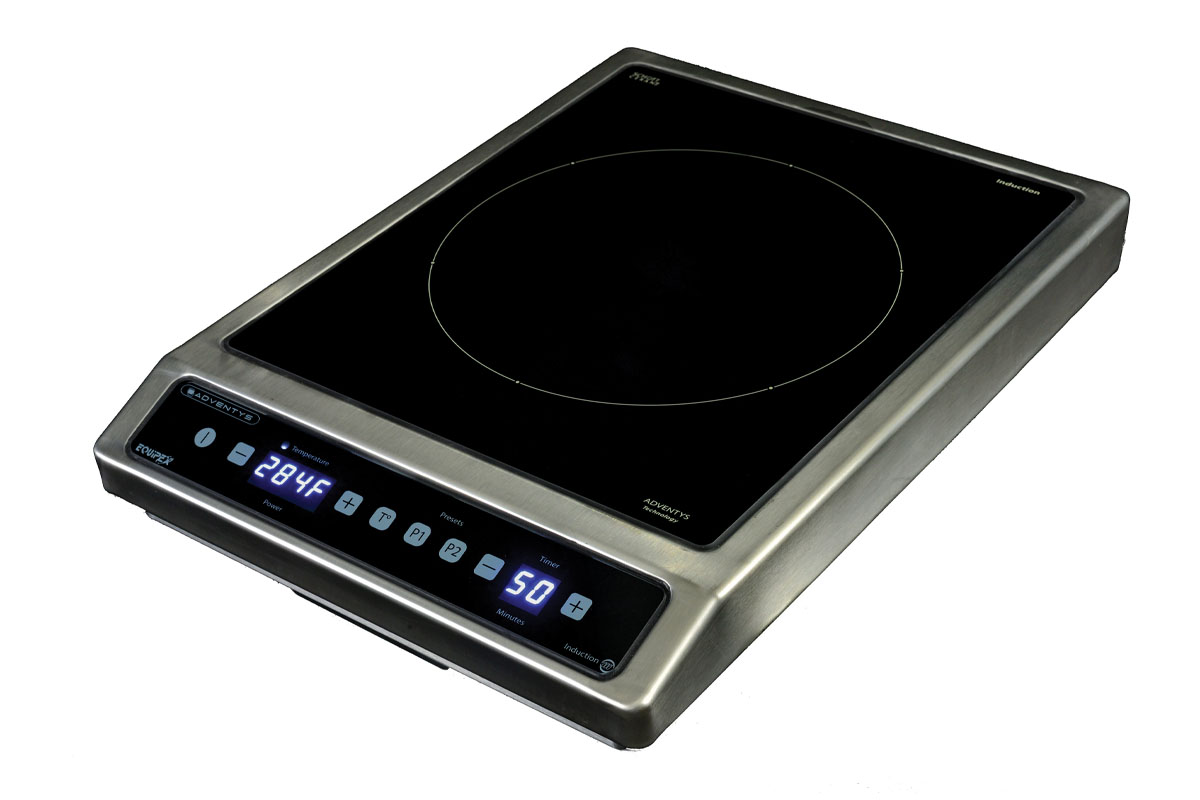
Adventys
MODEL: BRIC 2500
WATTS PER HOB: 2500
PROGRAMMABILITY: 25 power levels; 110 temperature levels
DIMENSIONS: 15½-in.W x 20¾-in.D x 3½-in.H
WEBSITE: equipex.com
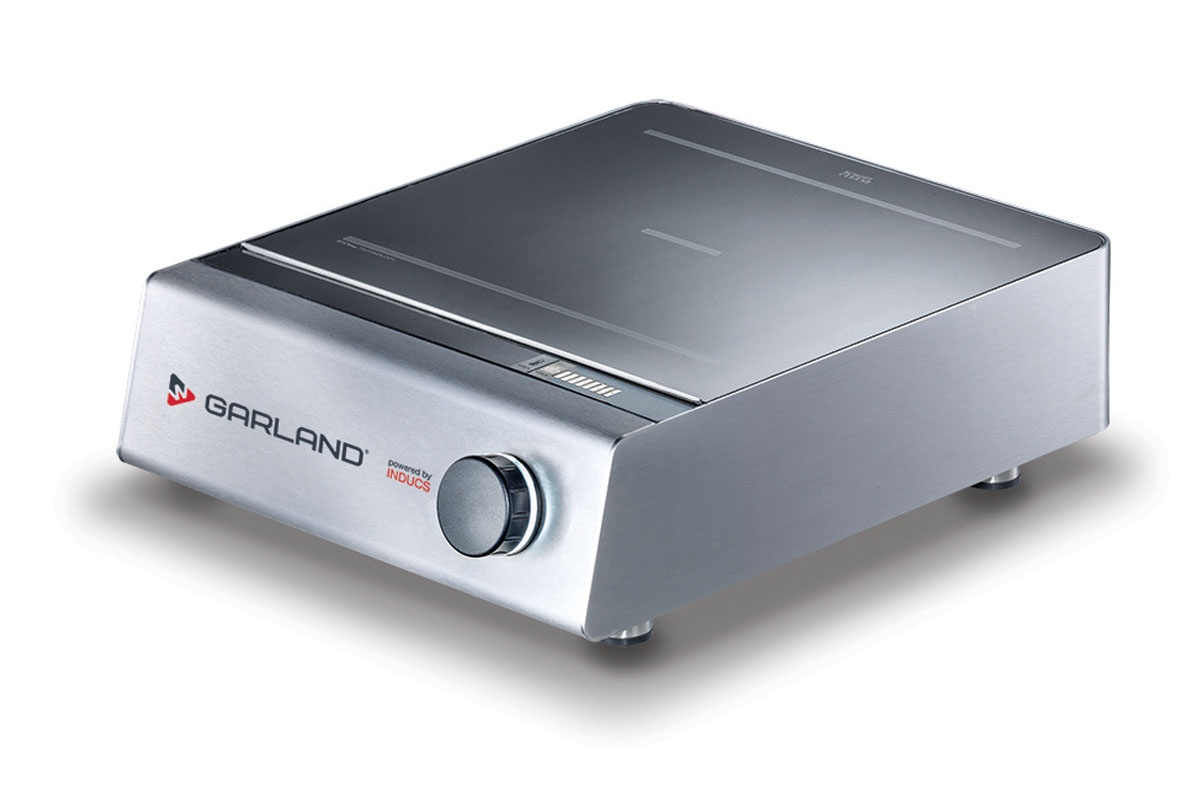
Garland
MODEL: Instinct Hob 3.5
WATTS PER HOB: 3500
PROGRAMMABILITY: 12 power levels
DIMENSIONS: 15-in.W x 18-in.D x 5½-in.H
WEBSITE: garland-group.com
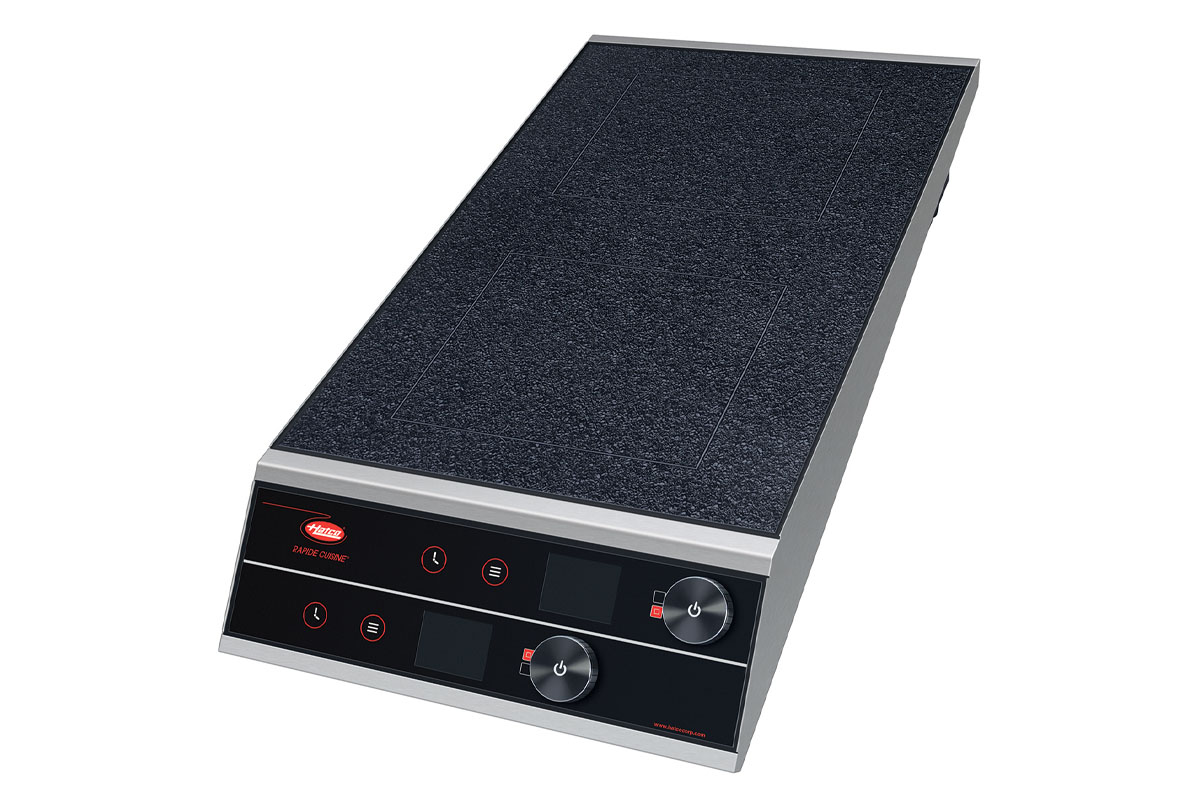
Hatco
MODEL: Rapide Cuisine (IRNG-PC2F-36)
WATTS PER HOB: 3120 or 3600
PROGRAMMABILITY: Variable power control
DIMENSIONS: 14-in.W x 29½ -in.D x 5-in.H
WEBSITE: hatcocorp.com
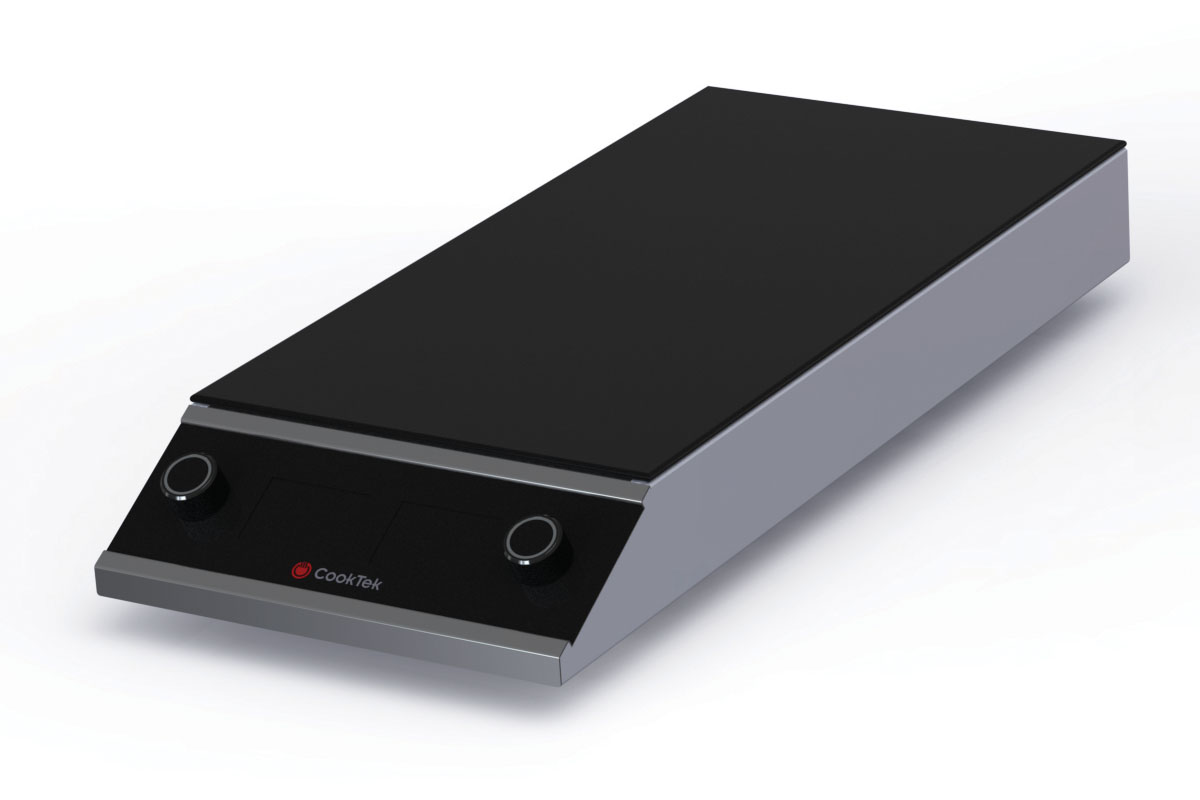
CookTek
MODEL: Helios
WATTS PER HOB: 2500
PROGRAMMABILITY: 10 power levels
DIMENSIONS: 13½-in.W x 31-in.D x 3 5⁄7-in.H
WEBSITE: cooktek.com

Vollrath Co.
MODEL: High Power 4-Series Countertop Induction Range
WATTS PER HOB: 2600, 3000 or 3800
PROGRAMMABILITY: Variable power control
DIMENSIONS: 16½ -in.W x 19⅜-in.D x 5 3⁄16-in.H
WEBSITE: vollrath.com
RELATED CONTENT
- Advertisement -
- Advertisement -
- Advertisement -
- Advertisement -
TRENDING NOW
- Advertisement -
- Advertisement -


